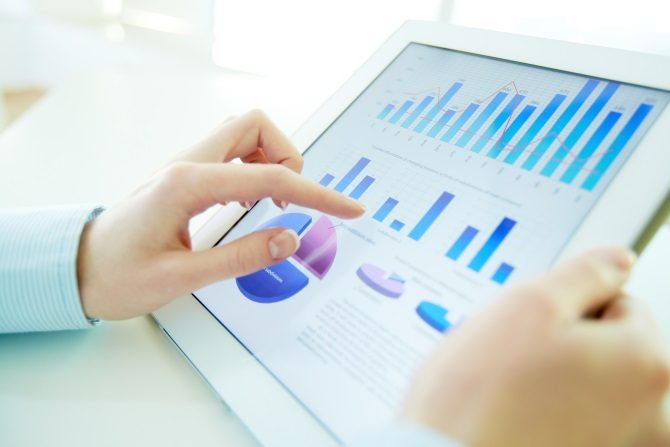The world is becoming more and more data-driven, with endless amounts of data available to work with. Big companies like Google and Microsoft use data to make decisions, but they’re not the only ones.
Is it important? Absolutely!
Data analysis is used by small businesses, retail companies, in medicine, and even in the world of sports. It’s a universal language and more important than ever before. It seems like an advanced concept but data analysis is really just a few ideas put into practice.
What Is Data Analysis?
Data analysis is the process of evaluating data using analytical or statistical tools to discover useful information. Some of these tools are programming languages like R or Python. Microsoft Excel is also popular in the world of data analytics.
Once data is collected and sorted using these tools, the results are interpreted to make decisions. The end results can be delivered as a summary, or as a visual like a chart or graph.
The process of presenting data in visual form is known as data visualization. Data visualization tools make the job easier. Programs like Tableau or Microsoft Power BI give you many visuals that can bring data to life.
There are several data analysis methods including data mining, text analytics, and business intelligence.
How Is Data Analysis Performed?

Data analysis is a big subject and can include some of these steps:
- Defining Objectives:Start by outlining some clearly defined objectives. To get the best results out of the data, the objectives should be crystal clear.
- Posing Questions:Figure out the questions you would like answered by the data. For example, do red sports cars get into accidents more often than others? Figure out which data analysis tools will get the best result for your question.
- Data Collection:Collect data that is useful to answer the questions. In this example, data might be collected from a variety of sources like DMV or police accident reports, insurance claims and hospitalization details.
- Data Scrubbing:Raw data may be collected in several different formats, with lots of junk values and clutter. The data is cleaned and converted so that data analysis tools can import it. It’s not a glamorous step but it’s very important.
- Data Analysis:Import this new clean data into the data analysis tools. These tools allow you to explore the data, find patterns, and answer what-if questions. This is the payoff, this is where you find results!
- Drawing Conclusions and Making Predictions:Draw conclusions from your data. These conclusions may be summarized in a report, visual, or both to get the right results.
Let’s dig a little deeper into some concepts used in data analysis.
Data Mining

Data mining is a method of data analysis for discovering patterns in large data sets using statistics, artificial intelligence, and machine learning. The goal is to turn data into business decisions.
What can you do with data mining? You can process large amounts of data to identify outliers and exclude them from decision making. Businesses can learn customer purchasing habits, or use clustering to find previously unknown groups within the data.
If you use email, you see another example of data mining to sort your mailbox. Email apps like Outlook or Gmail use this to categorize your emails as “spam” or “not spam”.
Text Analytics

Data is not just limited to numbers, information can come from text information as well.
Text analytics is the process of finding useful information from text. You do this by processing raw text, making it readable by data analysis tools, and finding results and patterns. This is also known as text mining.
Text mining can also collect information from the web, a database or a file system. What can you do with this text information? You can import email addresses and phone numbers to find patterns. You can even find frequencies of words in a document.
Business Intelligence

Business intelligence transforms data into intelligence used to make business decisions. It may be used in an organization’s strategic and tactical decision making. It offers a way for companies to examine trends from collected data and get insights from it.
Business intelligence is used to do a lot of things:
- Make decisions about product placement and pricing
- Identify new markets for product
- Create budgets and forecasts that make more money
- Use visual tools such as heat maps, pivot tables, and geographical mapping to find the demand for a certain product
Data Visualization

Data visualization is the visual representation of data. Instead of presenting data in tables or databases, you present it in charts and graphs. It makes complex data more understandable, not to mention easier to look at.
Increasing amounts of data are being generated by applications you use (Also known as the “Internet of Things”). The amount of data (referred to as “big data”) is pretty massive. Data visualization can turn millions of data points into simple visuals that make it easy to understand.
There are various ways to visualize data:
- Using a data visualization tool like Tableau or Microsoft Power BI
- Standard Excel graphs and charts
- Interactive Excel graphs
- For the web, a tool like D3.js built using JavaScript
The visualization of Google datasets is a great example of how big data can visually guide decision-making.
Data Analysis in Review
Data analysis is used to evaluate data with statistical tools to discover useful information. A variety of methods are used including data mining, text analytics, business intelligence, combining data sets, and data visualization
Sumber : makeuseof.com
